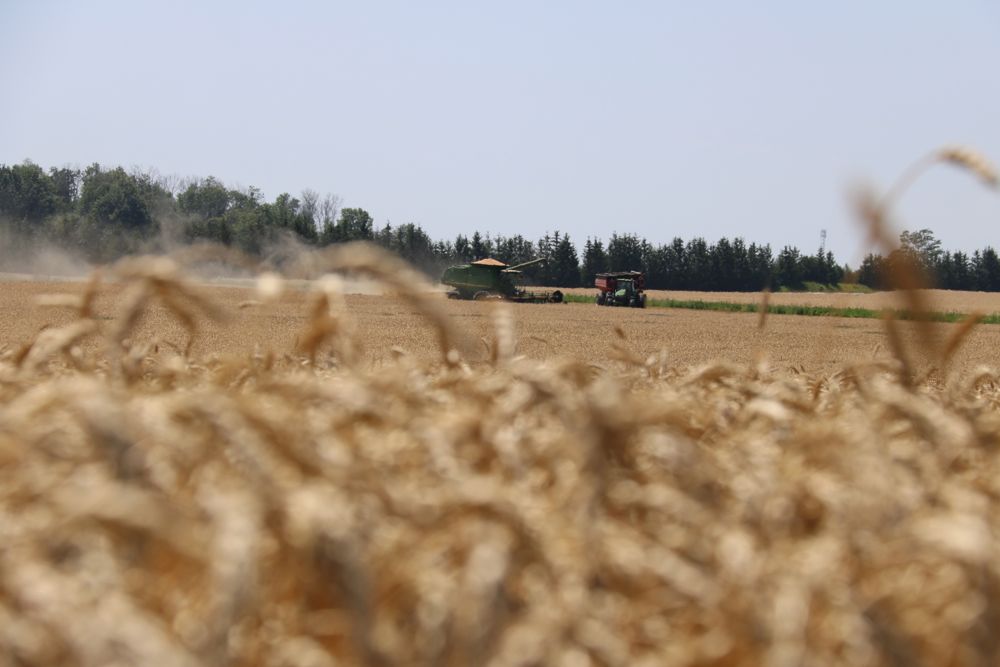Soybean growers don’t like nematodes. They don’t even like saying the word. There seems to be something almost unnatural about the tiny worm-like pests that destroy more yield potential in Ontario soybeans than any other pest.
Now there’s another reason to cringe when you hear the word. Nematodes are moving into corn. It isn’t the familiar soybean cyst nematode, but it’s a nematode all the same, and it’s going to take skill and determination to preserve corn yields in the face of it.
Read Also

Could crop sharing be a viable option for your farm?
Crop sharing could be a good option for young and beginning farmers.
Fortunately, it looks like we’re going to get help from seed treatments just in time.
Soybean growers were slow to mobilize against their nematodes. They were on a nematode learning curve, and many farmers didn’t start scouting until there were already yellow circles in their fields. Researchers say this is why the pest has moved past Toronto and into eastern Ontario so quickly.
Now, Albert Tenuta is finding corn nematodes in Ontario, and he fears they are on their way to becoming a much bigger concern. Tenuta is field crops pathologist with the Ontario Agriculture Ministry and in 2009, Tenuta surveyed the province and found nematodes at yield-reducing levels in a quarter of the fields he checked.
Two years later, that 25 per cent had grown to 32 per cent of fall fields, meaning a third of all cornfields are now at threshold levels.
In the U.S., corn nematodes are being called the new big threat to corn yields — although some pest specialists are also warning against panic reactions.
The good news for Canadian growers is that one of the latest nematicides released on the market, Votivo, is registered for use on corn and soybeans (as of October 2011).
Manufactured by Bayer CropScience, Votivo’s active ingredient is a biological — Bacillus firmus — which creates a type of protective coating at the soil-root interface. When roots probe through the soil, their surface gets abraded by friction with the soil. The roots then “bleed” at these scratch sites, losing tiny quantities of various chemicals and exudates.
Ingeniously, nematodes and some other pests have evolved to sniff out these chemicals, and they use the chemicals to locate root hairs to attack. As Tenuta puts it, the chemicals are like runway lights at an airport.
Votivo wraps the root so the chemicals don’t leak out, which means in turn that the nematodes don’t find the roots.
This year, Votivo will be available through a limited number of seed companies on a limited basis as part of the Poncho seed treatment package. It is expected to be more widely available next year. Bayer CropScience is also working on the registration for Poncho and Poncho-Votivo in soybeans to be ready until 2013.
Despite earlier reports that Syngenta’s Avicta corn nematicide would also be available in Canada by 2013, it appears the company has decided against developing Avicta in Canada.
However, Harold Wright, Syngenta’s biological assessment manager for Eastern Canada says the company is actively researching other seed treatments and technologies.
“The optimism is that we’re learning a lot about the impact of nematodes in various crops, including corn, and it’s exciting to see the industry respond,” says Wright. But, it isn’t a simple matter, Wright adds. “The development of new active ingredients and new technology is very problem specific and pest specific, and we are not looking at these in isolation, but as part of a whole management strategy.”
Wright says all players need to look at full management programs, with carefully selected varieties, seed treatments and other technologies. In fact, there are strong indications that some of the combinations may give rise to “one plus one equals three” benefits.
Wright’s enthusiasm is shared by Tenuta, who has worked with Agriculture and Agri-Food Canada, the University of Guelph and several colleagues in the U.S., to develop and confirm the value of nematicides for Canadian conditions.
On their own, nematicides do provide some benefit, Tenuta says, but the overall results can be much better when they’re incorporated with other management tools, including crop rotations, resistant varieties and the emerging field of seed treatments.
“One of the neat things with the nematicides, as well as with the insecticides and fungicides, is that they provide an opportunity to increase the longevity of some of the germplasm out there, and that’s important,” says Tenuta. “We often think of seed treatments just from an early-season stand establishment perspective, and that’s still an important and critical component of it, but the benefits of those early-season seed treatments go far beyond stand counts.”
Don’t forget soybeans
On top of the good news that Canadian farmers now have a nematicide to combat corn nematodes is the news that soybean growers are also getting a weapon to add to their arsenal against soybean cyst nematode (SCN).
In areas where cysts are just starting to develop and where populations are still relatively low, such as in much of eastern Ontario, new products should help limit the growth of nematode pressure, Tenuta believes.
However, growers should be aware of the technical challenges ahead.
“Votivo provides growers with a seed treatment tool that will be used in conjunction with genetic tolerance,” says Kate Hyatt, technical support representative with Bayer CropScience. “Using a multi-pronged approach to fight the buildup of soybean cyst namatode in Ontario’s fields will help relieve pressure on the genetic tolerance, prolonging its usefulness.”
Hyatt points out there are hurdles to overcome in formulating a biological product with chemcial insecticides. The most efficient package is to co-formulate Votivo with Poncho or other insecticides, she says.
Doing so means, however, a tougher research burden on the company. Not only must Bayer CropScience prove Votivo perfoms as a single-use product, it must also prove there is a syngergistic effect with Poncho in order to gain registration.
“Because they’re both being put on the seed at the same time, we had to make sure all products (i.e. Votivo and the insecticide) perform at their best,” Hyatt says. Hyatt however is confident that the science will bear out the company’s optimism. CG















